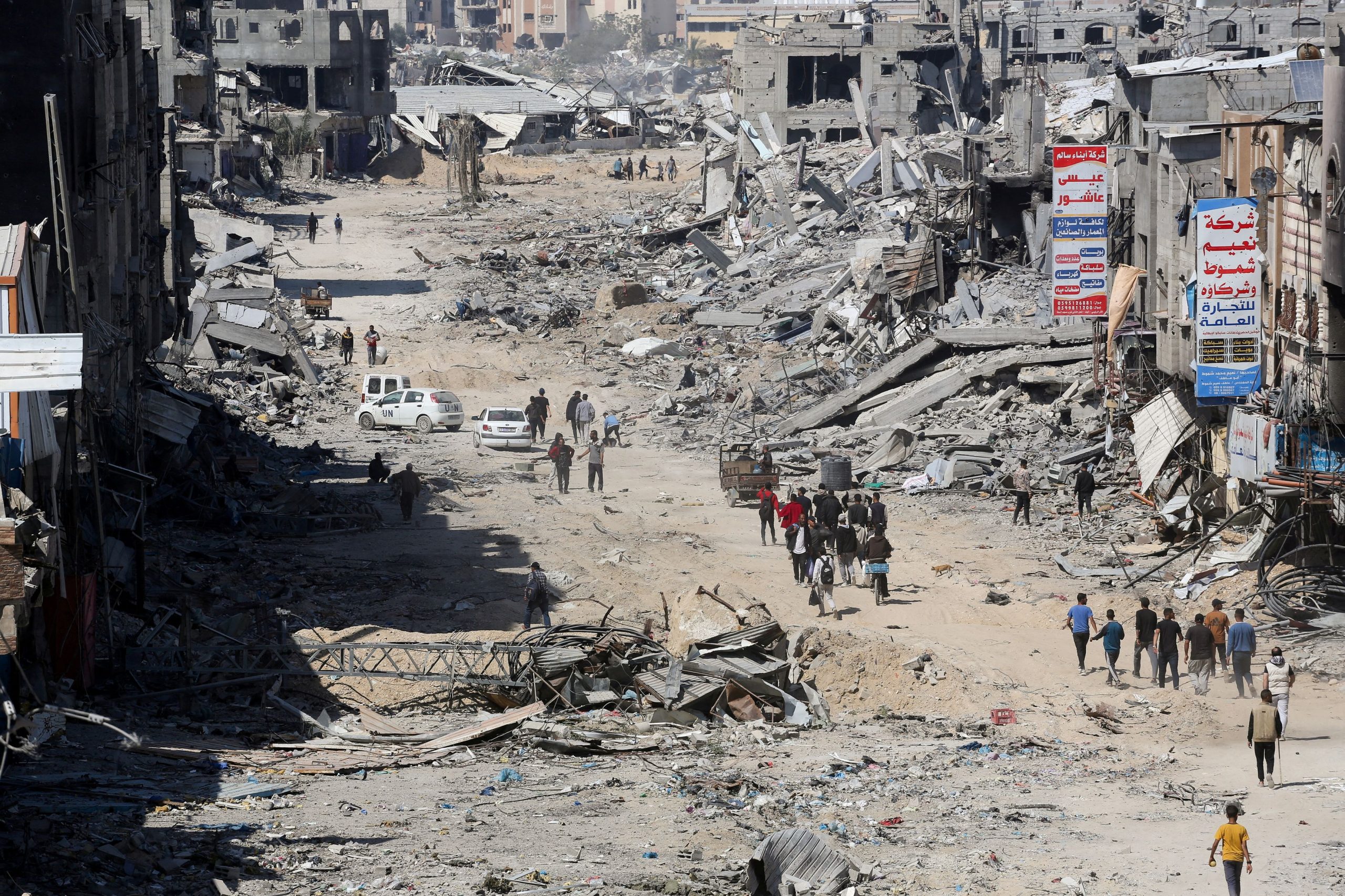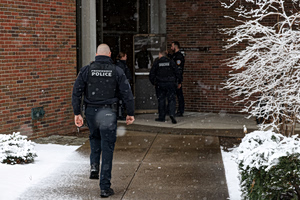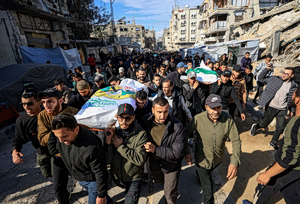CAIRO—Central Intelligence Agency Director William Burns presented a new proposal here to help advance a deal between Israel and Hamas to end the six-month war in Gaza and release remaining hostages.
Under the plan, presented Sunday night, Hamas would release 40 of the more than 100 captives still held in Gaza in return for the release from Israeli prisons of 900 Palestinian prisoners—including 100 convicted of terrorism charges—over the course of a six-week cease-fire in Gaza, Arab mediators said.
The U.S. also proposed to allow civilian Palestinians to return without restrictions to northern Gaza from the south , where they have been displaced since the conflict began in October. Israel has been reluctant to allow that for fear that Hamas militants would mix in with the civilian population and return to areas that Israel says it has already cleared. Israeli negotiators had previously offered to allow 60,000 Palestinians to return there.
Under the plan, those Palestinians allowed back would be granted free movement along two main north-south roads, with Israeli forces repositioned nearly a third of a mile away from the routes.
The proposal also calls for Hamas to deliver a list of the 40 hostages it would release, including five female soldiers, and compromise on which Palestinian prisoners could be released from Israeli prisons.
There was no immediate reaction from Hamas.
Israeli Prime Minister Benjamin Netanyahu said Monday that he had received a detailed report on the talks in Cairo. He reaffirmed his aims to release the hostages and vanquish Hamas, which he said required entering Rafah , the last city in southern Gaza that the Israelis haven’t entered. President Biden has said he doesn’t want to see an Israeli operation there.
“This will happen,” Netanyahu said. “There is a date.”
Egyptian and Qatari mediators are expecting both Hamas leadership and Israel to respond to the latest proposal by Tuesday night.
Qatari Foreign Ministry spokesman Majed Al-Ansari told the BBC that he was increasingly optimistic about reaching agreement on a cease-fire deal but cautioned, “We are by no means at the last stretch of the talks.”
Diaa Rashwan, chairman of Egypt’s State Information Service, told Cairo-based broadcaster Alghad TV that a truce, if secured, could begin as soon as Wednesday, the start of the Muslim Eid al-Fitr holiday.
Cease-fire talks have been at an impasse for months, at times showing signs of progress before stalling again. U.S. and Arab negotiators have only managed to secure one pause in fighting, in November, which only lasted for a week. That deal was accompanied by an exchange of 100 hostages in Gaza for more than 300 Palestinian prisoners. The mediators took a new tack in January, pushing a phased diplomatic process that would start with a release of hostages and eventually lead to a withdrawal of Israeli forces and an end to the war in Gaza.
One of the biggest obstacles to an agreement has been whether Israel would concede to Hamas’s demands to allow the unrestricted return of Gazans to the northern part of the enclave and remove Israeli troops from populated areas.
Israel has been concerned that those moves, if done in tandem, could allow Hamas to rebuild power in the strip and survive the war . The Israeli military has already had to return to parts of northern Gaza it previously said it had cleared, including Al-Shifa Hospital , when militants regrouped there.
Hamas, a U.S.-designated terrorist group that sparked the war with its Oct. 7 attack that killed 1,200 mostly civilian people in Israel and abducted more than 240, says it is fighting the Israeli occupation of Palestinian territories.
Israel launched an intense bombing campaign of Gaza and sent in ground forces to destroy Hamas, which had ruled the Palestinian territory since 2007. More than 33,000 Palestinians have been killed since, mostly women and children, according to Palestinian health authorities, who don’t distinguish between civilians and fighters.
Israel is coming under mounting international pressure to halt the fighting, including from the Biden administration. The White House also has called for rapid steps by Israel to boost aid shipments, as well as for improved security coordination between the Israeli military and aid groups, particularly after an Israeli drone strike last week killed seven workers for U.S.-based charity World Central Kitchen who were delivering supplies.
Cogat, the Israeli agency that coordinates humanitarian aid in Gaza, said that 419 trucks of aid were inspected and transferred to the enclave on Monday, the highest number of trucks that have entered in any one day since the war began. That followed Sunday’s high of 322 trucks. Before the war, Gaza received about 500 trucks of aid a day.
The latest U.S. proposal also calls for 500 truckloads of humanitarian aid to enter Gaza each day once the cease-fire begins.
Domestically, Netanyahu faces pressure to reach an agreement from the families of more than 120 hostages —including many who are believed dead—still in captivity.
Netanyahu has a limited margin to maneuver because of resistance from his ruling partners. National Security Minister Itamar Ben Gvir, who heads a far-right party in his coalition, on Monday threatened to topple Netanyahu’s government if he agreed to a cease-fire that stops the war without an attack on Rafah.
Finance Minister Bezalel Smotrich , who heads the far-right Religious Zionism party, asked Netanyahu to convene the security cabinet for a full update on the talks.
While it forges ahead with the cease-fire talks, Israel has also hit its enemies hard across the region—from Hezbollah to senior Iranian officers in Syria —seeking to durably degrade their capacity.
Israel killed a Hezbollah commander in an airstrike in southern Lebanon early Monday, extending its campaign against the Iran-backed group. Hezbollah acknowledged the death of Ali Ahmed Hassin in the village of Sultaniyeh, whom the Israeli military described as a brigade commander who had conducted “numerous launches” toward Israeli territory in the past six months. Israel said two other Hezbollah fighters also were killed.
Hezbollah later said it had launched a drone at a naval site in Rosh HaNikra in northern Israel. The Israeli military said it responded by targeting a Hezbollah militant in Lebanon’s southern Nabatieh region.
Israeli Foreign Minister Israel Katz said that if diplomacy and military pressure don’t deter Hezbollah and Iran, Israel was ready to escalate its campaign against them further.
The exchange of fire also followed the Israeli military’s exit from Khan Younis, leaving Israel with a much-reduced fighting force in Gaza than at the height of the war. Israeli military officials said the troops left to recuperate and prepare for future operations.
A cease-fire is seen as key to returning calm not just to Gaza but to the broader Middle East. If a deal is eventually reached, Hezbollah has said it would halt attacks on Israel. “When the war stops in Gaza, it stops in Lebanon,” Secretary-General Hassan Nasrallah said in a speech Friday.
Israel has said it remains committed to returning security to northern parts of the country by pushing Hezbollah away from the other side of the border.
Israel and Hezbollah, which have a decadeslong history of conflict, have exchanged strikes since the Hamas-led attacks on southern Israel on Oct. 7.
Initially, the strikes appeared calibrated on both sides to avoid escalating the conflict. While Hezbollah has fired hundreds of rockets at northern Israel, these were largely aimed at military targets and most were intercepted by Israel’s defense systems.
In recent months, though, some volleys from Hezbollah have targeted residential areas, while Israel has hit targets deeper inside Lebanon beyond the border region that is usually at the center of the conflict between the two sides.
These bombardments have exacted the heaviest toll on Hezbollah in a single conflict since 2006. The militia says that 265 of its fighters have been killed. At least 60 civilians have also been killed, according to Information International, a Beirut-based research center.
The fighting has displaced tens of thousands of Israelis and tens of thousands of Lebanese living on opposite sides of the border.
Israel has also stepped up attacks in Syria that it says are aimed at stopping Iranian weapons deliveries to Hezbollah. Last week, Iran said Israel struck an Iranian consulate building in Damascus, killing a senior Iranian general. Tehran warned of a strong retaliation.
Write to Stephen Kalin at stephen.kalin@wsj.com and Summer Said at summer.said@wsj.com



